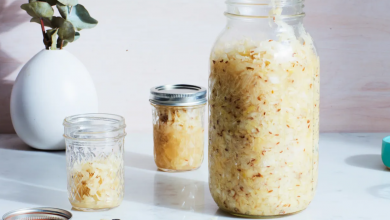Gluten, the new enemy?
Gluten free is not just a fad. Because if we do not suffer from celiac disease, we can also suffer from another disorder: hypersensitivity to gluten.

.More and more consumers are removing gluten – a generic term for proteins in wheat, barley and rye – from their diets and benefiting from it. However, all are far from being genuine celiac patients, in whom gluten sly destroys intestinal cells with growth retardation, multiple deficiencies, or digestive disorders as a result. The majority would rather suffer from a “hypersensitivity” to gluten. It is a disease that has just been defined and whose contours are in the process of being clarified.
Gluten hypersensitivity, a real disease
How does this manifest itself? According to Prof. Frank Zerbib, from the department of hepato-gastroenterology and digestive oncology (CHU Bordeaux). “The ingestion of gluten causes digestive or extra-digestive symptoms which regress under a gluten-free diet ”. It mainly manifests itself in young adults in their forties and affects women five times more than men.
The affected person suffers from digestive symptoms; irritable bowel with mainly abdominal pain or discomfort, bloating, transit disorders (diarrhoea, constipation or both), even nausea, gastroesophageal reflux, vomiting or aerophagia. Sometimes extra-digestive symptoms can coexist, such as fatigue and weakness, headache, depressive syndrome, joint and muscle pain.
A “free” diet to test – gluten free
In the absence of a blood marker to definitively identify the disease (studies are underway). The diagnosis of gluten hypersensitivity is prominent out only after ruling out celiac disease and a wheat allergy. When gluten products are taken out from diet, the patient is asked to test a gluten-free diet for six weeks.
“If all the disorders disappear during the eviction and there is a recurrence when reintroducing minimal doses of gluten, gluten hypersensitivity is highly likely,” explains Frank Zerbib. If the improvement is only partial, it is rather an intolerance to flour or sugars which in some people cause excessive fermentation phenomena (bloating, pain). ”
These sugars, called “FODMAPs” (including wheat carbohydrates, lactose and fructose, etc.) cause gastrointestinal symptoms much more frequently than gluten hypersensitivity. Overall, a diet low in FODMAPs would improve gastrointestinal symptoms in at least half of people.
Medical advice required
While the gluten-free diet has hitherto been reserve for people with celiac disease, gluten hypersensitivity has become a new indication for this avoidance diet. “However, it should not be used without clinical and biological advice, warns Dr Corinne Bouteloup, gastroenterologist-nutritionist (CHU Estaing-Clermont-Ferrand). Indeed, dietary support makes it possible to avoid the dietary imbalances that it could induce. “Except that in the case of non-celiac gluten intolerance, the strict nature of the avoidance diet and its duration are not yet decided.
Wheat: proteins and sugars on the dock
Gluten is not responsible for all ailments. Intolerance to FODMAPs * sugars, which include wheat carbohydrates, is even more common than hypersensitivity to gluten. People relieved by a gluten-free diet are therefore mistaken: by depriving themselves of foods containing gluten. They also eliminate their carbohydrates, the real culprits of their symptoms. And to complicate matters, a second wheat protein has caught the attention of researchers: ATIs for “trypsin amylase inhibitors”.
It would promote type 2 diabetes
It is on the rise, but could prove to be more harmful than beneficial. Initially intended for gluten intolerant and allergic people as well as those suffering from celiac disease , it is acclaimed by all followers of a “healthy lifestyle”. A recent study calls into question the validity of this diet for the general public, that is to say for people without such pathologies. Conducted by Harvard researchers, it has not yet been published but the preliminary results were presented during the annual scientific sessions of the American Federation of Cardiology in Portland.
To reach these conclusions, the researchers collected and cross-checked data on 200,000 people over 30 years. They have interest particularly in the impact of the gluten-free diet on people who had no medical indications recommending them to ban it from their diet.
The analysis showed that regular consumers of gluten (between 5.8 and 7.1 grams per day) appeared to be less at risk of developing type 2 diabetes. Whereas, there as also those who did not consume it decreased. At the same time their consumption of complete fibers, which have the property of lowering the risk of diabetes by regulating blood sugar.
According to the authors, this work corroborates the statements of nutritionists who “ warn about the very high glycemic index of processed gluten-free products which also lack fiber and nutrients ”. They also take the opportunity to remind that without medical reason , it is not necessary to deprive yourself of gluten. While in the United States, nearly 75% of them currently attempt to eliminate gluten from their diet. In France, 5% of us follow a vegetarian, vegan or gluten-free diet.
Gluten is a protein found in grains such as wheat, barley or spelled . It gives the dough volume, elasticity and binder, hence its frequent use to make bread. But you can completely use gluten-free flour for your gluten-free bread, cakes or pastries preparations.. Flours that do not contain gluten have their own characteristics, so you select the right one on the basis of your needs.
Among these neutral flours, there are rice flours (sandy texture), buckwheat, potato (thickening flour), tapioca (light), chestnut, chickpeas (for salty preparations), millet … It is therefore preferable to have several of these flours at home, depending on the recipe you want to make. In addition, it is better to mix 2 or 3 flours, including a neutral flour such as rice flour, to substitute them for wheat flour.
Bake gluten free bread with or without a bread machine
Now that you know a little more about gluten-free flours, let’s show you how to make your gluten-free bread. You have the choice between using a bread maker or not. Both are possible, as most bread machines now have one or more “sugar-free bread” programs. If you are not using a bread maker, you will need to use a cake tin. T
here is only one sprout for gluten-free bread, unlike wheat flour bread. You should however make sure to use an equal amount of flour (s). And water to compensate for the lower elasticity of the sugar-free flour and allow the dough to rise. Finally, use lukewarm water to dilute the yeast, i.e. water at 40 ° C, so that the yeast acts fully.
Using cornstarch
Cornstarch can be a very good alternative for people with allergies or intolerance to gluten, it easily replaces white flour . The term cornflour is for designating the flour out from corn. It is rich in starch. The properties of cornstarch are essentially its binding power in the dough. Because the starch will coagulate with water under the effect of heat, and its thickening power. Finally, it states that the cooking time of your cornstarch bread dough will be shorter than that of a bread dough with traditional wheat flour.
Our recipe for success as well as the baker
Do you want to compete with your baker, and make delicious homemade sugar-free bread? Here is the recipe that will make you an aspiring baker:
- Ingredients: make a flour mixture with 350 g of rice flour, 50 g of soy flour, 75 g of potato flour, 25 g of chestnut flour, 10 g of guar gum (thickener). You will also need 10 g of salt, 10 g of dry baker’s yeast, 2 tablespoons of olive oil and 500 g of lukewarm water.
- Preparation: without a bread machine. You can also mix these ingredients in a bowl, and pour the dough into a buttered cake mold. Indeed, gluten-free flour is less elastic, and will not stay on a baking sheet. You should store it in a mold to channel the thrust. Cover the mold with a damp cloth, and place it in a warm place for 1 hour. Then bake for 1 hour at 200 ° C with a bowl containing water next to it to prevent the dough from drying out.
- With a bread machine: pour the preparation into the bread machine. Choose the “gluten-free bread” program. Wait 2 hours, and unmold.





